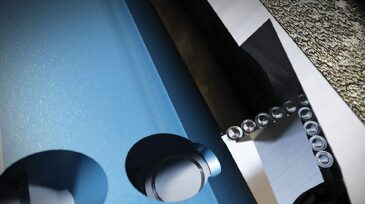offshore
-
This paper describes the design, testing, and execution of a unique deepwater completion system that adapts a known multistage ball-drop system used in onshore unconventional reservoirs.
-
To the casual observer of completions and hydraulic fracturing, it might appear that multifractured horizontal wells are a relatively recent concept that materialized just as we required them for unconventionals.
-
There are more than 100 accumulations in the southern North Sea that are flagged as stranded fields. One of these stranded tight gas fields, the Kew field, has been developed successfully with the use of a subsea well, horizontal drilling, and hydraulic fracturing.
-
To help the industry understand offshore-facility weight predictability, IPA recently conducted a comprehensive study that sheds new light on facility weight performance and identifies the root causes of weight growth, providing guidelines for improving predictability.
-
Innovation is the life-blood of any high-tech industry, and the operators are the primary beneficiaries of its application.
-
This paper gives an overview of ongoing research activities on the subject of offshore use of composite flowlines, risers, and topside piping.
-
Well plugging and abandoning on a limited budget is a lofty goal that forces the industry to consider new ways and new materials. Cost-effectively dealing with this global problem will require developing tools to carry out the decommissioning without bringing in a drilling rig.
-
Developing performance indicators that will provide meaningful comparisons across the wide variation in oil and gas platforms is important, since good indicators can drive optimal operations. But is is also complex.
-
A well drilled and completed in a marginal field offshore India produced only gas until the oil-bearing sands were perforated and the well was put on commingled-oil-and-gas production.
-
The purpose of this paper is to examine coiled-tubing (CT) -stimulation and -logging technologies used in the timely project execution of one of Saudi Arabia’s largest field developments to enhance matrix-stimulation success in a cost-effective manner.










